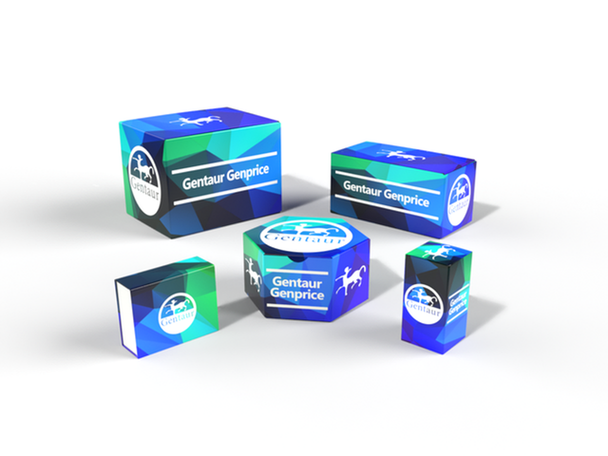Description
COL12 Antibody | 59-683 | Gentaur UK, US & Europe Distribution
Host: Rabbit
Reactivity: Human
Homology: Predicted species reactivity based on immunogen sequence: Bovine, Rat
Immunogen: This COL12 antibody is generated from rabbits immunized with a KLH conjugated synthetic peptide between 71-100 amino acids from the N-terminal region of human COL12.
Research Area: Immunology, Neuroscience
Tested Application: WB
Application: For WB starting dilution is: 1:1000
Specificiy: N/A
Positive Control 1: N/A
Positive Control 2: N/A
Positive Control 3: N/A
Positive Control 4: N/A
Positive Control 5: N/A
Positive Control 6: N/A
Molecular Weight: 82 kDa
Validation: N/A
Isoform: N/A
Purification: This antibody is purified through a protein A column, followed by peptide affinity purification.
Clonality: Polyclonal
Clone: N/A
Isotype: Rabbit Ig
Conjugate: Unconjugated
Physical State: Liquid
Buffer: Supplied in PBS with 0.09% (W/V) sodium azide.
Concentration: batch dependent
Storage Condition: Store at 4˚C for three months and -20˚C, stable for up to one year. As with all antibodies care should be taken to avoid repeated freeze thaw cycles. Antibodies should not be exposed to prolonged high temperatures.
Alternate Name: Collectin-12, Collectin placenta protein 1, CL-P1, hCL-P1, Nurse cell scavenger receptor 2, Scavenger receptor class A member 4, Scavenger receptor with C-type lectin, COLEC12, CLP1, NSR2, SCARA4, SRCL
User Note: Optimal dilutions for each application to be determined by the researcher.
BACKGROUND: This gene encodes a member of the C-lectin family, proteins that possess collagen-like sequences and carbohydrate recognition domains. This protein is a scavenger receptor, a cell surface glycoprotein that can bind to carbohydrate antigens on microorganisms facilitating their recognition and removal. In addition, these receptors can recognize oxidized phospholipids so they may also participate in removing oxidatively damaged or apoptotic cells.






